| Article ID | Journal | Published Year | Pages | File Type |
|---|---|---|---|---|
| 2430455 | Developmental & Comparative Immunology | 2007 | 13 Pages |
Equine herpesvirus-1 (EHV-1) infects horses, causing acute respiratory disease, neurological signs, and is also a leading cause of abortion. Protection from EHV-1 infection and disease depends on both humoral (virus neutralising antibody) and cellular (mainly cytotoxic T lymphocytes, CTL) immune responses. CTL activity after EHV-1 infection has been extensively investigated and is closely associated with an alternative measure of cell mediated immunity (CMI), interferon-gamma (IFN-γ) synthesis. This study investigates EHV-1-specific IFN-γ synthesising cells in potentially immunocompromised horses; foals, pregnant mares and aged animals, after field or experimental infection with EHV-1. In foals and pregnant mares, the kinetics after experimental infection were similar and the phenotype of IFN-γ+ synthesising cells after EHV-1 stimulation was mainly CD8α+. In contrast, in samples collected from primed healthy ponies exposed to EHV-1 several months previously or in old ponies (28 years old), the majority of EHV-1-specific IFN-γ+ lymphocytes expressed a CD5+, CD8α− phenotype. This study highlights the complexity of the relationship between EHV-1, a common pathogen in horses, and the virus-specific cellular immune response as measured using IFN-γ synthesis.
